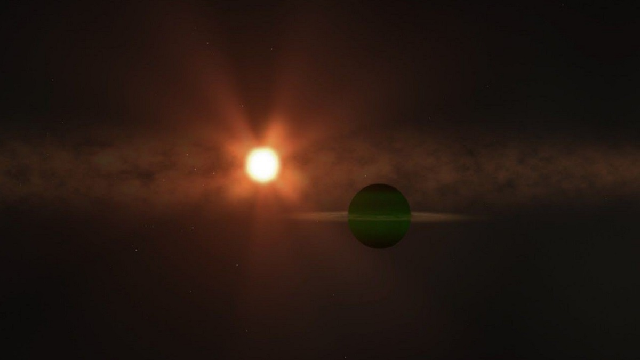This exoplanet is the size of Neptune and orbiting a young star.
This article demonstrates the importance of perseverance in STEM and also shows applications of Physics and Earth and Space sciences to students in years 9-12.
Word Count: 453

An exoplanet the size of Neptune has been discovered around a small young star about 32 light-years from Earth, ending a hunt more than a decade long.
At between 20 and 30 million years old, the star AU Microscopii, or AU Mic, is much younger than our Sun and has only about half its mass.
In the 2000s, it was found to still be surrounded by a large disc of debris, a remnant of its formation. Since then, astrophysicists have been actively searching for planets around it, because it is within such discs of dust and gas that they form.
Hence the excitement around the discovery of AU Mic b, which is described in a paper in the journal Nature.
“These stars generally have very strong magnetic fields, which make them very active. That explains in part why it took nearly 15 years to detect the exoplanet…” says co-author Jonathan Gagné, from Université de Montréal, Canada.
“The numerous spots and eruptions on the surface of AU Mic hampered its detection, which was already complicated by the presence of the disc.”
In 2010, a team led by Peter Plavchan, now at George Mason University, US, and the paper’s lead author, began observing AU Mic from the ground using NASA’s Infrared Telescope Facility (IRTF).
The telescope operates in the infrared, where the team hoped to see the signal of the planet better, since the star’s activity is less intense in this type of light.
This made them aware, in Gagné’s words, of the “plausible presence of a planet” around AU Mic, but more was needed – and thankfully more was available.
Since the amount of light blocked depends on the size of the exoplanet and its distance from its star, these observations allowed then to determine that AU Mic b is about the size of Neptune, and that it passes in front of its star every 8.5 days – indicating that it is extremely close to the star.
“This star probably hasn’t had time to form small, rocky planets yet,” says Tom Barclay from the NASA Goddard Space Flight Centre. “It gives us a chance to get a picture of what might have happened before our own terrestrial planets like Earth and Venus formed.”
Login or Sign up for FREE to download a copy of the full teacher resource





